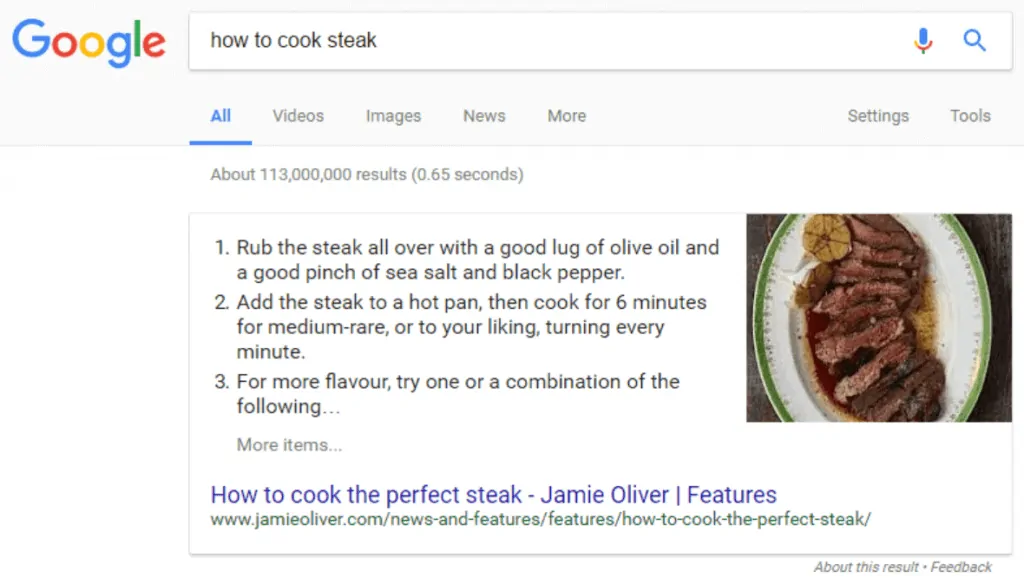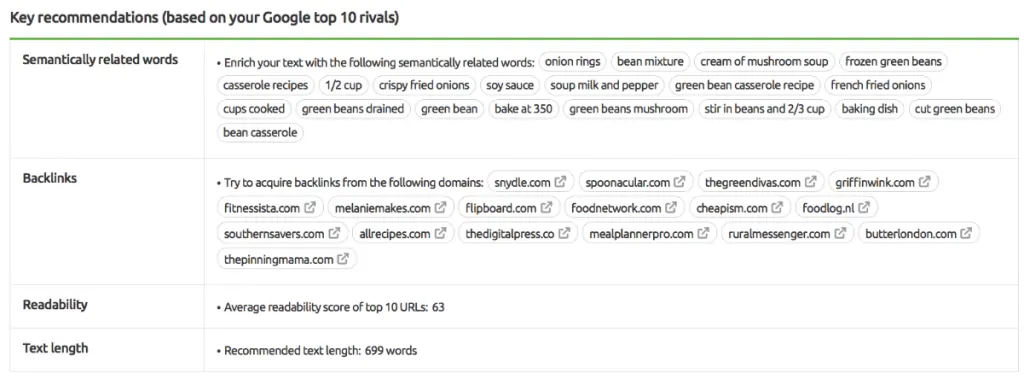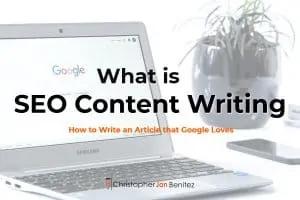Last Updated on 4 months by Christopher Jan Benitez
You read that right. Google ‘loves’ things. At least, it’s programmed to.
It updates its algorithm to appreciate some things more than others now and then.
As search engine optimization (SEO) practitioners, we want to win its heart from all angles.
If you’re reading this article, you probably want to know the science of pleasing Google in SEO and blogging.
And we’re here to do just that!
So, without further ado, let’s discuss what blog content writing services should do and what results they ensure.
Writing SEO Content: What is It?
Let’s go with the two keywords here–SEO and Content.
By covering SEO, the writer focuses on the following:
- Website ranking
- Relevance of topics
- Sales generated by the articles
So, what exactly is SEO content writing?
It refers to creating high-quality content to target search queries and achieve high search engine rankings for each.
Unlike the rules from a decade ago, search engines now have higher standards for spammy. Merely making articles where you put related keywords is no longer acceptable.
With this in mind, it’s wise to require content writers to have this built into their processes.
It’s now a requirement to have SEO-optimized content writing baked into all your web pages to achieve good rankings.
Knowing this, what sets SEO content writers apart from just content writers?
To set the two apart and gauge how good they are, here are a few things they should be capable of:
- Please pay attention to the buyer persona and adopt their language
- Naturally and strategically place keywords across the content piece
- Use a maximum of two primary keywords only
- Use relevant content types that work well for the target audience (e.g.checklists, infographics)
- Throw in a few inbound and outbound links that supplement the content
Now that we have these standards set, we can better understand what to look out for in writers.
Let’s move on to more specific metrics and tips on approaching each one.
SEO Content Writing Tips
Don’t be alarmed if you have already soaked in the information until this point. We will contradict ourselves a bit in this section.
Let’s say the game hasn’t changed in the past ten years. Instead, it evolved. So here are our five tips that should be part of the content writing skills of the person creating content for you:
Use Multiple Keywords
“Huh? Didn’t you say we should use a maximum of two primary keywords?”
Yes, we did. But remember, it’s an SEO expert’s job to hit as many words as possible.
Initially, you want to write content optimized for a target keyword. This increases its chances to rank in search engines.
But if you can
For keyword research, there are a lot of free and paid tools online to get you a list of long-tail keywords and relevant keywords your competitors are ranking for on search results.
To best improve your ranking, injecting as many keywords as you can naturally fit into a content piece is still a great practice.
Opt for Semantically Related Terms
As we mentioned earlier, ranking isn’t what it used to be a decade ago.
We can’t have text generators rant about something, inject keywords all over the content piece, and expect great ranking.
Google is now much more intelligent than that and looks for content with a human touch. This is what we mean by semantically related and means referencing to:
- Known people and brands in the industry talked about
- Natural language; pronouns and synonyms break the monotony and redundancy (e.g. Avoid talking this way – The dog walked up the park. The friendly dog came near to greet me. The dog licked my hand before I could give it a dog treat.)
- Mind the terms your competitors use (via TF-IDF tools or Term Frequency-Inverse Document Frequency)

Understand Keyword Intent
Keyword or search intent refers to a person’s purpose or goal when they search for a particular keyword or phrase.
Understanding the intent behind a keyword can help writers create a blog post that is more relevant and useful to the person searching, which can, in turn, improve the chances that the content will rank well in search engine results.
There are generally four types of keyword intent:
- Informational intent – The person is looking for information on a particular topic.
- Navigational intent – The person is looking for a specific website or page.
- Transactional intent – The person is looking to purchase or take another specific action.
- Commercial investigation – The person is considering purchasing but is still in the research phase.

By understanding the intent behind a keyword, a writer can create content tailored to the needs and goals of the person searching. This makes the content more valuable and increases the chances that it will rank well in search results.
Unique Hooks
As you can imagine, the internet is chock full of redundant content. When you find something of value on one website, you’re likely to find similar content on another.
Knowing this, readers value unique angles on topics of interest that give them a more personal view.
Here are a couple of tips to achieve this:
- Throw in your case studies
- Conduct surveys and show results
- Share stats from reliable sources to back your point
- Add your personal experiences
Implement SEO Copywriting Techniques
SEO copywriting is the practice of writing content for the web to improve the search engine rankings of a website.
Once you have a keyword to optimize your content with, there are several techniques that writers can implement in their blog writing process to improve the SEO of their content:
- Use internal and external links – Link to other web pages on your website (internal links) and authoritative websites (external links) to provide additional context and value for readers.
- Use alt tags for images – Add alt tags to images to describe the image’s content and include relevant keywords. This will help search engines understand the image’s content and may improve the page’s ranking.
- Optimize for the “3 Kings of On-Page SEO”– Include your target keyword on the title tag (H1), meta description, and SEO title of a web page. Doing so immediately increases your chances of ranking on top of Google search results.
- Use headings and subheadings – Use headings and subheadings to break up the content into smaller, easier-to-read sections and highlight the article’s main points. This can improve the user experience and make it easier for search engines to understand the page’s content.
Make Content Readable to a 5th Grader
This isn’t sarcasm and is literal.
Readability indicators such as the Flesch Reading Ease Score have algorithms measuring the readability of content against the comprehension of people from various levels of education.
The highest bracket you can go for is easily readable for 5th graders.
Here’s a quick rundown of how to better improve that score:
- Use brief sentences and paragraphs. Break them as needed.
- Format subheadings so readers can get the idea by just skimming through them
- Use transition words so readers can quickly move from one paragraph to the next
- Maximize formatting to highlight key points in the content piece (white space, bold text, etc.)
There you have it–SEO content writing tips compressed as much as we can for your writing (and auditing) pleasure.
Use Content Optimization Tools
Content optimization tools can help writers create SEO-friendly content more efficiently and effectively. By using the tools and observing its best practices, you can enjoy its benefits, including:
- Identifying and suggesting the use of relevant keywords – These tools can help writers identify and incorporate relevant keywords into their content, improving the chances that the content will rank well in search results.
- Providing feedback on the readability of the content – Some tools can analyze the content for readability and provide feedback on how to improve it, making the content more appealing and easier to understand for readers.
- Analyzing the overall SEO performance of the content – These tools can provide an analysis of the overall SEO performance, including its keyword density, meta tags, and the presence of internal and external links. This can help writers identify areas for improvement and optimize the content for better search engine rankings.
- Saves time – Content optimization tools can save writers time by automating many of the tasks involved in SEO copywriting, such as keyword research and analysis. They can also improve productivity and workflow, like seamless integrating with Microsoft Word or Google Docs. All these can allow writers to focus on creating high-quality, engaging content.
Here’s a short list of tools you must try to help shore your SEO writing process:

SEO Content Writing Templates
We’ve covered quite a lot up to this point, and if you’ve reached this part, you’re probably very serious about upping your SEO game.
So what does a content template do that’s so important?
When creating content, a lot of time goes into it, especially for the research phase.
Content writing isn’t merely just writing.
Knowing that, here are the key features you’ll need from a template that can guide writers, so there’s a more evident flow.
More than making work more accessible, it allows for a better alignment of SEO objectives and overall Google-friendly content.
With that, here are the key goals to aim for with your content writing templates:
1. Identify your competitors
- Find out your top (10) rivals on Google
- Compare stats for terms you’re competing for
- Use these in your plan to draft related topics

2. Good templates also show your SEO objectives by showing the following:
- Sites to get backlinks from
- Article length suggestions
- Average readability score to beat
3. Basic SEO recommendations
These are also built-in with content management systems like WordPress’ Yoast.
- Ideal words to target for titles, meta description, headers, keywords
- The optimal length for these

You should now have an easier time drafting articles when you have a suitable format for content writing templates.
What’s important is you get a good feel for the flow so you can easily adjust the template for new SEO initiatives or delegate the writing as needed.
To top it off, you can now better search for additional resources with this core template format in place.
Frequently Asked Questions
What Is SEO Content Writing?
SEO content writing is creating text-based content on a site and optimizing it for its target keyword to make it rank higher on search engine results pages (SERPs).
What Is SEO in Writing?
SEO ranks pages on top of search engines for their search queries, increasing their visibility and generating more clicks and conversions. SEO writing is vital to your organic ranking strategy because search spiders crawl and index pages based on what’s written on them. The goal of a blog author is to produce better and more helpful content for your target audience. That goes on top of optimizing the piece for its target keyword. When done correctly, search engines will reward the page with a high keyword ranking on search results.
What Is Content Writing in SEO?
Content writing is creating well-written text communicating your ideas and message to your audience perfectly. At the same time, the content writer should balance writing for humans with writing for search engines. That means including its target keyword and relevant terms into page elements considered by search engines with the highest ranking factors.
Conclusion
Making your content SEO-friendly is quite the science.
Developing a solid SEO strategy means creating optimized content following the abovementioned tips.
From general metrics to writing tactics, there are many things to look at when making a piece of content and optimizing it.
But be warned: it will be a long and arduous journey to get to the top of the Google search results mountain.
Don’t worry, though; it gets more accessible since there are now a lot of templates and processes to choose from.
With each one you use, you get a good feel of what to look after to keep improving your scores on Google.
When you have solid tips and templates in place, you can lighten up your SEO experience whether you do it yourself or hire a writer.
Read more SEO content writing tips here!

